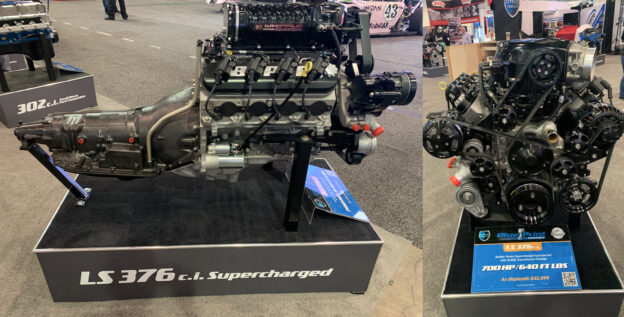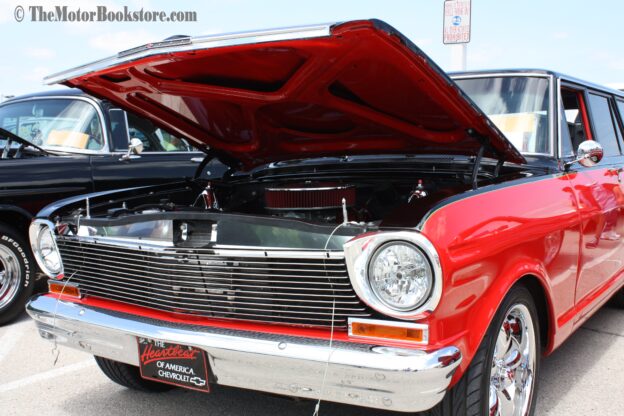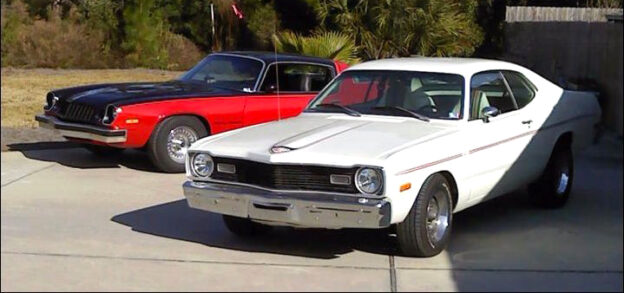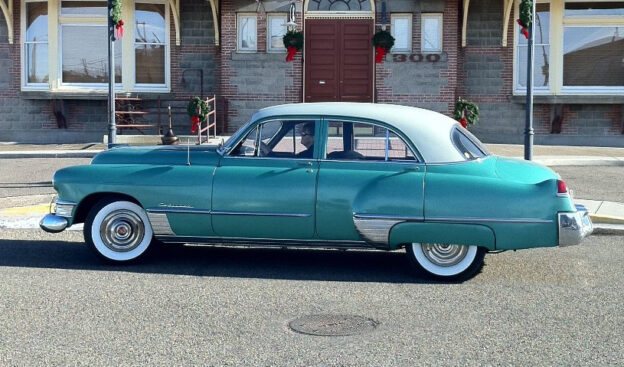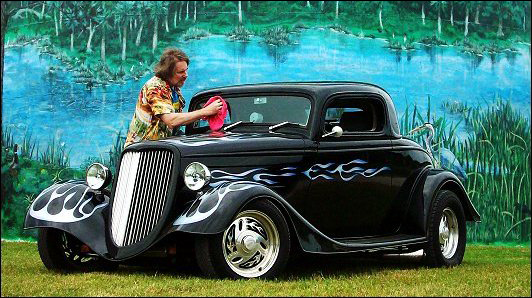
Author Archives: Nadine Reynolds
Transmissions are one of the most essential parts in your vehicle, acting as the middleman between the engine and the driveshaft. They also suffer more wear and tear than other parts, and failures can be expensive to repair. With this guide, you’ll learn about common automatic transmission problems so you can diagnose them early.
Problems going into gear
Once you shift into drive, your transmission should immediately go into the appropriate gears. But a balky transmission will sometimes hesitate, go into the wrong gear, or just not go into gear at all. As it gets worse, the transitions between gears become more jarring. Potential causes include problems with the gears, an open electrical circuit, failed shift solenoids, or broken valves.
Slipping gears
Another sign of trouble is your car slipping out of gear while driving. You can tell this is happening if the RPMs rev higher than normal without an increase in speed. This could be caused by worn or broken gear linkage, a worn clutch, or faulty solenoids. If the transmission only slips when it’s warm, it may mean the internal seals or valves are broken.
Low/leaking fluid
Automatic transmission fluid (ATF) is your transmission’s lifeblood, and low or leaking fluid is a common cause of failure. The resulting increases in friction, corrosion and sludge build-up can lead to the whole unit breaking down. Check your fluid at least twice a year – ATF doesn’t burn off, so if it’s low, you can be pretty sure you have a leak somewhere.
Overfull fluid
Conversely, putting too much ATF in your vehicle will also cause problems. Excessive fluid can cause foaming, which leads to shifting problems and slipping. The increased pressure can also damage internal seals and cause leaks. Fluid that is dark or smells burnt is also a sign of trouble.
What should I do?
If you suspect a transmission problem, get to a repair shop as soon as possible. Waiting until you “have the time” or “have the money” increases the chances you’ll need more of each to get it fixed. Make sure your fluid is filled adequately and is a bright red color. You’d also be surprised how many problems you can fix by replacing the filter, as clogging leads to other disasters.
Something else going bad? Check out our blogs on what to look for in a battery or alternator and fuel pump.
With Christmas comes Christmas movies, both new and old. Some feature iconic landmarks, some feature traditional characters, and some feature memorable, classic cars. Read on to learn about some of the most famous Christmas movies and their classic cars.
It’s a Wonderful Life (1946)
In It’s a Wonderful Life, one of the most important things to George Bailey is his 1919 Dodge Brothers Model 30. This early Dodge car was the first to be produced in Detroit and had multiple different body types, such as the sedan and roadster, available. Despite the harsh New York winters, however, George Bailey opted for the convertible touring model.
A Christmas Story (1983)
This 1937 Oldsmobile Six F-37 was Ralphie’s father’s treasure in A Christmas Story and a rather popular sedan at the time. Despite how much he loved the car, he had some frustration with the level of maintenance it required. Ralphie tried to help his father with the car one day, leading to the iconic soap-in-mouth moment.
Miracle on 34th Street (1947)
In Miracle on 34th Street, a conversation with Kris Kringle leads Fred Gailey and Doris and Susan Walker to drive by their dream house in Fred’s 1940 Ford V8 Standard Coupe. Though the car doesn’t play a significant role in the film, it records the use of the Standard model that is rather rare today compared to its Deluxe counterpart.
Scrooged (1988)
The Checkered Cabs were rather short lived, but very important to the New York-based films made in the early 1960s and on. In Scrooged, the Ghost of Christmas Past drives one to take Frank Cross through time to reflect on his childhood.
Home Alone (1990)
Harry and Marv used their “OH-KAY Plumbing & Heating” 1986 Dodge Ram Van as a cover to access wealthy neighborhoods in Home Alone. The spacious interior proved useful as the “Wet Bandits” used it to store their stolen items.
Want to read about more famous cars? Check out our blog about celebrities’ classic cars here.
You’ve finally completed your first car restoration and are ready to show it off, but what do you need to do to make your first car show go smoothly? The Motor Bookstore is here to help make prepping for your first car show go smoothly so everyone can see your handiwork at its best.
Cleaning the Exterior
Everyone will see your car’s body first, so be sure to make a good impression. Begin by cleaning the engine and undercarriage with a good degreaser. Next, do tires and wheels using a commercial cleaner spray and scrub brush. Finally, hose the car down and clean it with an automotive cleaner and sponge, working your way from the roof down. Rinse the car and dry with a microfiber towel.
Waxing
A good waxing will really make your car shine. Apply wax in thin coats, working in small sections around the car. Make sure to do this in the shade or other cool environments – if the paint gets hot, the wax will dry too quickly and cause hazing.
Interior
People will be peeking inside your car at the show, and you want them to like what they see. Scrub the door jams and hinges, then vacuum and clean the carpet with carpet cleaner. Wipe down vinyl and plastic upholstery with warm water and mild soap. Clean the glass using an automotive glass cleaner (household glass cleaners will cause streaking).
Detailing
Your new NGK spark plugs and satellite radio may be great for modern driving, but car show visitors and judges will be less impressed. Have as many factory original parts as possible – filters, wheels, plugs, radios, etc. You should also make sure your tires don’t have abnormal wear. If you plan on being a show regular, it might be worth investing in a display-only set of tires and wheels.
At the Show
Make sure to bring some cleaning supplies and touch-up tools for standing dust and dirt, especially if it’s an outdoor show. A car cover to protect it at night is also a good idea. You can draw additional interest by putting together a display with original sales brochures, owner and shop manuals, and maybe a photo album of the restoration process.
Working on a restoration for a car show? Check out our blogs on restoration budgeting and prep for handy DIY restoration tips.
Buying a used car can be a great way to save money and still get a reliable vehicle, but it’s important to inspect it thoroughly before making a purchase. By taking the time to look over the car carefully, you can avoid potential problems and make sure you’re getting a good deal. Read on to learn more about how to inspect a used car before buying.
What to Bring
Some basic supplies will help you during the inspection process. Bring a notebook and pen to take notes and a small flashlight for the engine compartment. A magnet will help you detect concealed body work, and a CD or auxiliary cord is good for testing the sound system. Also, bring paper towels for checking fluids and a code reader for the onboard computer.
Check the Exterior
The first step in inspecting a used car is to check the exterior for any damage or signs of wear and tear. Look for scratches, dents, and rust, as these can all be indicators of larger problems. Check if there’s any sagging, which could show signs of suspension or frame problems. Make sure the body panels are all aligned properly and that the paint color matches across the entire car. Don’t forget to check the tires as well – uneven wear could mean steering, suspension, or frame damage.
Look Under the Hood
Inspect the engine compartment for any signs of leaks, including oil, coolant, or transmission fluid. Check the battery to make sure it’s in good condition and that the terminals are clean. Inspect the belts and hoses for any signs of wear, cracking, or corrosion. Look for oil stains on the block or foam residue on the oil filler cap, both of which can signal a leaking head gasket. Don’t forget to check the air filter and the condition of the radiator.
Inspect the Interior
Once you’ve checked the exterior, it’s time to take a look inside. Start by checking the seats and upholstery for rips, tears, and stains. Also, look for signs of damage on the dashboard and door panels. Make sure the air conditioning and heating are functioning and that there are no strange odors coming from the car. Check if the lights and other electronics are working properly. Use your code reader to see if any computer error messages come up and what they mean.
Test Drive the Car
With any car, you should always try before you buy. Check again for leaks by letting the car run while parked for 30 seconds, then moving it and seeing if any fluids have been left on the ground. Pick a route with some turns and speed changes. Listen for any unusual noises or vibrations and pay attention to how the car handles in turns and at higher speeds. Also, give the brakes a hard press at speed to see if there’s any pulsating or swerving.
Check the Vehicle History Report
Finally, it’s a good idea to check the vehicle history report before making a purchase. This will give you a detailed record of the car’s past, including any accidents or repairs that it may have undergone. It can also tell you whether the car has been stolen or has a salvage title, which can affect its value and insurance rates. You can usually obtain a vehicle history report from a third-party provider like Carfax or AutoCheck.
By following these steps, you can ensure that you’re making an informed decision when purchasing a used car. Taking the time to inspect it thoroughly can help you avoid potential problems and ensure that you’re getting a good deal. With these tips in mind, you’ll be able to confidently shop for a used car and drive away with a reliable vehicle.
Looking for more information on how to inspect a used car? Check out these blogs about fuel pumps and batteries and alternators to learn more.
Car restoration isn’t just for everyday folks. A love of cars is something that stays with you for life – if you end up becoming a famous celebrity, you can take that love to even greater heights. Read on to learn about some of the celebrities who like to restore classic cars as much as any other enthusiast.
Jay Leno
The former “Tonight Show” host is the standard-bearer for the celebrity classic car community. Leno’s collection consists of nearly 300 restored automobiles and motorcycles. It has everything from Doble steam cars to a 1960 Panhard PL 7. He’s also known for his car knowledge, which has led to the TV show “Jay Leno’s Garage” and a regular column in “Popular Mechanics”.
Tim Allen
Known for his role as Tim “the tool man” in “Home Improvement,” Tim Allen has collected a wide variety of both domestic and foreign classic cars over the years. His collection consists mostly of Chevrolets, such as the 1968 Chevy Camaro 427 COPO and the 1962 Chevrolet 409 Bel Air. He also collects several Fords, like the rare 1986 Ford RS200 only sold in the UK. His 1956 Ford F100 was featured in his latest show, “The Last Man Standing.”
Patrick Dempsey
The former “Grey’s Anatomy” star keeps a rotating collection of restored vehicles, which at times has included a 1954 Jaguar XK120, a Porsche 911 GT3 RS, and a 1967 VW Beetle. He even still owns and drives his first car, a 1963 Porsche 356. Dempsey’s love of vehicles led him to become a professional endurance racer in his own right.
Magnus Walker
This British former fashion designer has a great love for vintage Porsche 911s. He has about fifty Porsches total – forty of those being various 911s. He fell in love with the Prosche 911 as a kid and has since purchased and personally modified several 911s solely for the joy of driving them on the open roads.
Jeff Beck
The 8-time Grammy-winning English guitarist is fascinated with American hot rods, especially Ford Deuce Coupes and Roadsters. And unlike many celebrities, he does much of the restoration work himself – and has even built a 1932 Ford Coupe from scratch. At last report, his collection includes 14 hot rods along with several Chevrolet Corvettes.
Jerry Seinfeld
The comedian is known for his love of classic cars and various restored vehicles have been seen in his web series “Comedians in Cars Getting Coffee”. Seinfeld carefully guards his personal life, so we can only guess at the full extent of his collection. But in March 2016, he sold 17 cars, including 15 Porsches, at auction for a total of $22.2 million.
Adam Carolla
The podcast magnate and filmmaker has a collection of more than 20 classic cars, including several Lamborghinis, two former Paul Newman race cars, a Ferrari 330 GT 2+2, an Aston Martin DB9 and a Jaguar XJ-R. He hosted “The Car Show” when it aired on Speed TV, and competes in vintage car races throughout the country.
Wayne Carini
The TV personality started hosting his show “Chassing Classic Cars” in 2008. On the show, he searches throughtout the states for the rarest and neatest classic cars to buy and restore. While he makes a business out of selling the cars he restores, he keeps a private collection of unrestored cars, such as his favorite 1950s Hudson Italia. He also has a particular fascination for Ferraris ever since he first rode in a 1960 Rosso Chiaro 250 SWB.
Interested in car restoration? Read our blog on car restoration and check out our selection of restoration literature to get started on your project.
Should I Paint a Scratch on My Car?
As hard as you try to take care of your car, scratches are seemingly inevitable. Falling tree branches, keys that miss their mark, and bumps from people or luggage can all leave unsightly dings and blemishes on your vehicle. But should you paint a scratch on your car? The Motor Bookstore weighs in below.
The Pros and Cons
The main arguments against painting scratches on a car are that A) it can potentially be expensive and time-consuming, and B) fixing scratches aren’t essential to a car’s performance. After all, if it doesn’t get you where you’re going and faster, then what does it matter? However, we ultimately come out in favor of painting scratches for a few big reasons.
To begin with, even minor scratches will hurt your car’s resale and trade-in value. You may not care about them, but dealerships certainly will. In addition, deep scratches that penetrate the base coat or primer are prime candidates to eventually develop into rust holes. Lastly, many automotive experts agree that scratches can adversely affect your own view of the car – and if you think less of your vehicle, you may be less likely to do important regular maintenance such as oil changes, tire rotations and tune-ups.
Ways to fix scratches
Contrary to popular perception, many minor scratches can be fixed inexpensively in your own garage. Clear coat scratches can often be buffed out in minutes using regular automotive polishing compound, which spreads out the remaining clear coat over the affected area. (Be careful not to overdo it, or you may need to respray some clear coat back on.)
Base coat and primer scratches can take longer to fix, but are far more important to deal with. Many car dealers have touch-up paint or paint pens available for about $10 that do a passable job – just make sure to get the paint code off your vehicle’s compliance plate. You can also do a more professional overnight job using cleaning solvents, matching paint and primer, medium-grade wet sandpaper and polishing compound.
Thinking about doing more work to your vehicle? Check out our other blogs on engine rebuilds and recharging your A/C system.
Restoring a classic car is similar to other major life undertakings such as home remodeling or a big vacation – no matter how much you plan in advance, things can change without notice. The Motor Bookstore is here with tips and advice to make sure your bank account, time, and sanity stay on budget during your next classic car restoration project.
Keep a realistic schedule
A full frame-off classic car restoration can take up 1,500 hours – at least a year of part-time work. Know this going in, and plan your work schedule so you’re never feeling pressured to hit a deadline, as rushing can lead to costly mistakes.
Know your financial budget in advance
Having a target number will help guide every subsequent decision. The standard budget-setting method is to estimate your expenses if things go perfectly, then add at least 30 percent for unexpected costs.
Record your expenses
Keep all receipts for parts and labor, along with a tally of your running total. This tracking acts as a form of self-restraint against impulse buys.
Make a good initial car purchase
Carefully weigh the upfront price against how much various repairs will cost. Avoid cars with rust and missing trim, as these things are the most expensive to fix. Learn as much as possible before buying, and don’t rush your decision.
Do your own dirty work
Read books and manuals, watch DIY videos, talk to friends, and whatever else it takes so you can learn to do as much as possible. Even taking the car apart and cleaning each component on your own can save a lot of money versus what professional labor would cost.
Wait to order
Don’t buy any parts until you’ve fully disassembled the vehicle and cataloged what you need. From there, talk to salvage centers and car collector groups to see what’s available at discounted rates. Another little-known trick is to send a list of parts to various suppliers, and tell them the full order will go to the lowest bidder.
Relax
No matter how carefully you plan, there’ll be hiccups along the way. When they happen, take a deep breath, and remember: this is meant to be fun.
Want to learn more about car restoration? Check out our blogs about how to get your restoration started and what to do if you’re new to car restoration.
As any car owner quickly learns, car repairs are a fact of life. But The Motor Bookstore doesn’t want you spending a small fortune just to keep your car on the road. That’s why we’ve compiled five ways to save serious money on car repairs the next time you need work done.
1. Do as much of your own work as possible
As long as you have a good vehicle manual and a space to work in, you can learn to do a lot of basic maintenance and repairs. Changing your own oil, filters, tires, fluids, headlights and brakes will save you hundreds of dollars in labor costs while reducing the chances of major failures in the future.
2. Find good repair shops and mechanics
Be selective about who you bring your car to for work. Read reviews, talk to friends, or even visit a shop to see how things work there. Good shops should be ASE certified, clean, have good parts and labor guarantees, and get customers in and out quickly. Getting good work done now will save money later on.
3. Shop around
Even if you’ve found a repair shop you like, feel free to get a second opinion, especially if something seems suspicious. Get estimates that are separated by parts and labor so you can compare prices elsewhere. You can often get big discounts on parts online and also find an estimate of what a repair should cost.
4. Take advantage of warranties
Paying a little more for an extended or lifetime warranty now can pay big dividends if you have to use it. For example, alignment warranties can save you a bundle in the long run, especially if you live an area with heavy traffic or rough roads.
5. Review your bill before paying
Don’t let a repair shop sneak one by you. Make sure you haven’t been double-billed for parts or labor, that the total isn’t way larger than the estimate, and that unneeded repairs aren’t listed. Asking for your old parts back before they begin is a great way to keep things above board.
Looking for more ways to save serious money on car repairs? Check out our blogs on rebuilding an engine on a budget and DIY farm tractor repairs.
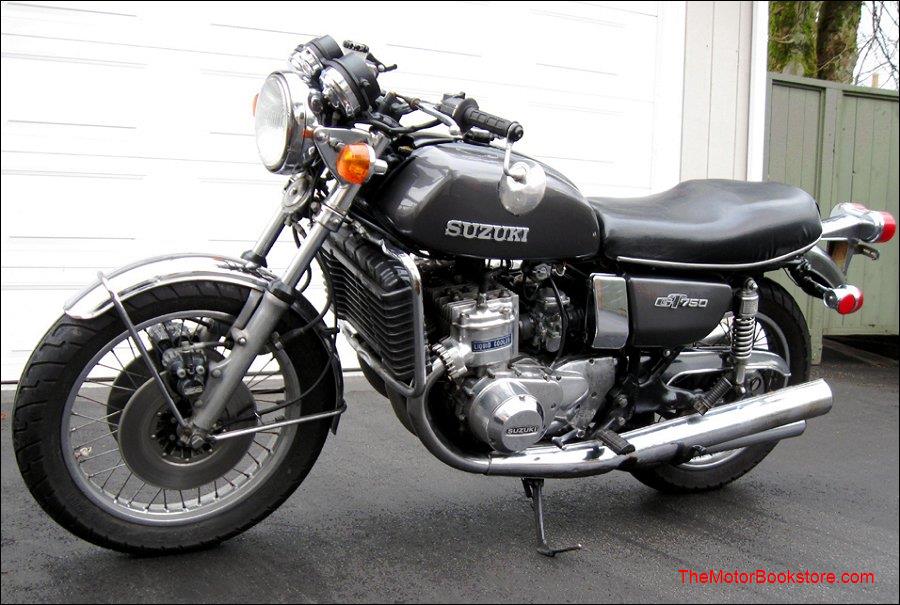
Getting Your Bike Ready For The Winter
When the leaves fall and the temperature drops, it is a sign to start getting your motorcycle ready for the winter. That, of course, means doing a little more than simply parking your motorcycle in an out of the way corner of the garage or pulling a cover over it while it sits in a storage building. Proper motorcycle winter storage goes a long way in giving your bike a long, useful life.
The first step in getting your bike ready for its winter hiatus is reading the maintenance and repair manual. Repair manuals give you valuable tips about maintenance and tune-ups that can be done before storing the bike for the winter. Some of those tips can be found in the next section.
Winter Storage Tips
Here are a few tips for preparing your motorcycle for winter storage:
- Clean and wax the bike. A clean bike keeps grease, oil, dirt and corrosive materials from damaging the paint or parts of you motorcycle.
- Park the bike in such a way that both tires are sitting on wood. If the bike is outside for the winter months, you certainly do not want the rubber sitting on the ground where the tires can rot and crack.
- Drain the oil and flush the crankcase. This keeps corrosive and gumming deposits from building up over the winter months. Replace the oil filter at this time while you are at it so that you can begin the spring with a new oil filter.
- Lubricate the chain or shaft drive to prevent rust from forming. Rust can damage the chain or shaft while the bike is in storage.
- Drain the fuel from the fuel tank and the carburetor. Sediments in gasoline clog fuel lines. Old fuel creates a harmful varnish on and plug up carburetor parts and fuel lines.
- Go over the wiring to check for cracks or breaks in the insulation. Repair or replace the defective wiring right away. Also, be sure and check to make sure all wiring connections are corrosion free and tightly fitted together.
- Disconnect and remove the battery. The battery will discharge during the winter months, and the acid solution in the battery will freeze. This freezing will crack or damage the battery case.
- Clean the battery cable connections. These connections can become glazed during use, but fine steel wool or a battery cleaner will brighten them back up. Once they are cleaned you can coat them with grease to seal them. This grease can be easily removed next spring.
- Check the wear on disc brakes and make sure the brake fluid reservoir is filled.
- Clean or change the air filter.
- Change your insurance policy. Most insurance companies offer special reduced rates for motorcycles that are in winter storage.
Readying Your Bike For The Next Riding Season
Repair manuals give you all of the how-to information that you will need to perform these simple maintenance procedures. You can also check with your dealer for additional information to help you get your bike ready for storage.
Ice and snow may force you to park your bike for a few months, but with a little end of the season maintenance, your bike will be ready to hit the road when spring comes.
Time to start riding again? Read more tips about inspection and repair when taking your bike out of storage in 6 Tips to Prepare Your Motorcycle For Riding Season.
Engine Rebuild Cost Saving Tips
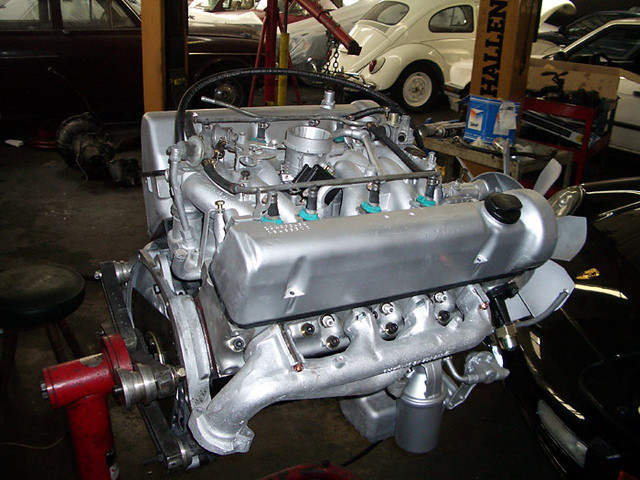
One of the big reasons to rebuild an engine is that, if done right, it can be significantly less expensive than purchasing a new one. If your budget is particularly tight, you’ll be looking to save every penny you can. Following these engine rebuild cost saving tips below will help your dollar go further when you’re working to get your favorite ride back on the road.
Do your research
When you have a limited budget, you can’t afford to throw away money on parts that don’t fit your engine or to make a mistake mid-rebuild. Make sure to do as much research as possible before beginning. Find out your engine’s model, year, displacement, etc. and determine what parts will match. Get an engine building manual as specific as possible to your engine with detailed instructions. And wait to order parts until you’re absolutely certain what you need.
Only replace what needs to be replaced
Why would you replace your block if it’s still in good enough shape to outlast the rest of the engine? If you’re on a budget, well-functioning is as good as new. You should still replace all bearing, seals, gaskets and piston rings as insurance against future failures. But if your deck is still straight, or if your cylinders only need to be honed, then roll with them. (You can also sell or scrap old parts to offset costs.)
Look for used engine parts
There are plenty of used-but-still-good engine parts available from vehicles that were taken off the road for other reasons. Check local junkyards, Craigslist, eBay and other second-hand sellers for these used parts. The seller is admittedly less likely to stand behind these parts with a warranty, so you’ll want to do your homework and inspect the parts for yourself before purchasing.
Prepare parts before bringing them to a shop
If you do need your cylinder heads bored or your deck milled, you may have to bring them to a machine shop. But you can still save money by preparing your parts beforehand. Disassembling and degreasing the engine core yourself is a lot cheaper than paying $75-100/hour for someone else to do it. (And it should go without saying, but make sure to pick a reputable shop that does fast, high-quality work.)
Not sure if you should rebuild your engine? Read more about rebuilding or buying new here: Rebuilding an Engine: What to Consider Before You Begin.

 Shop Store
Shop Store